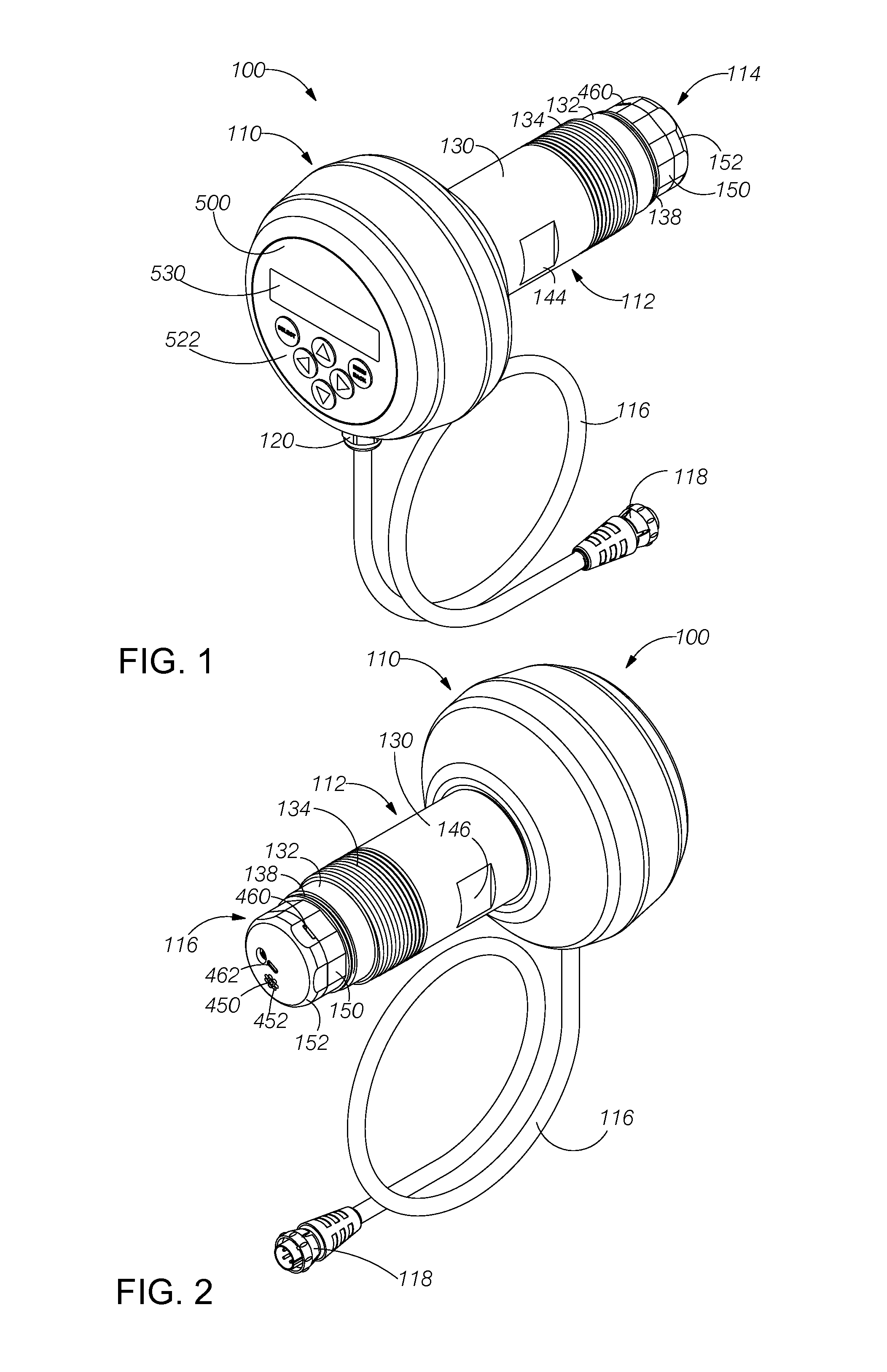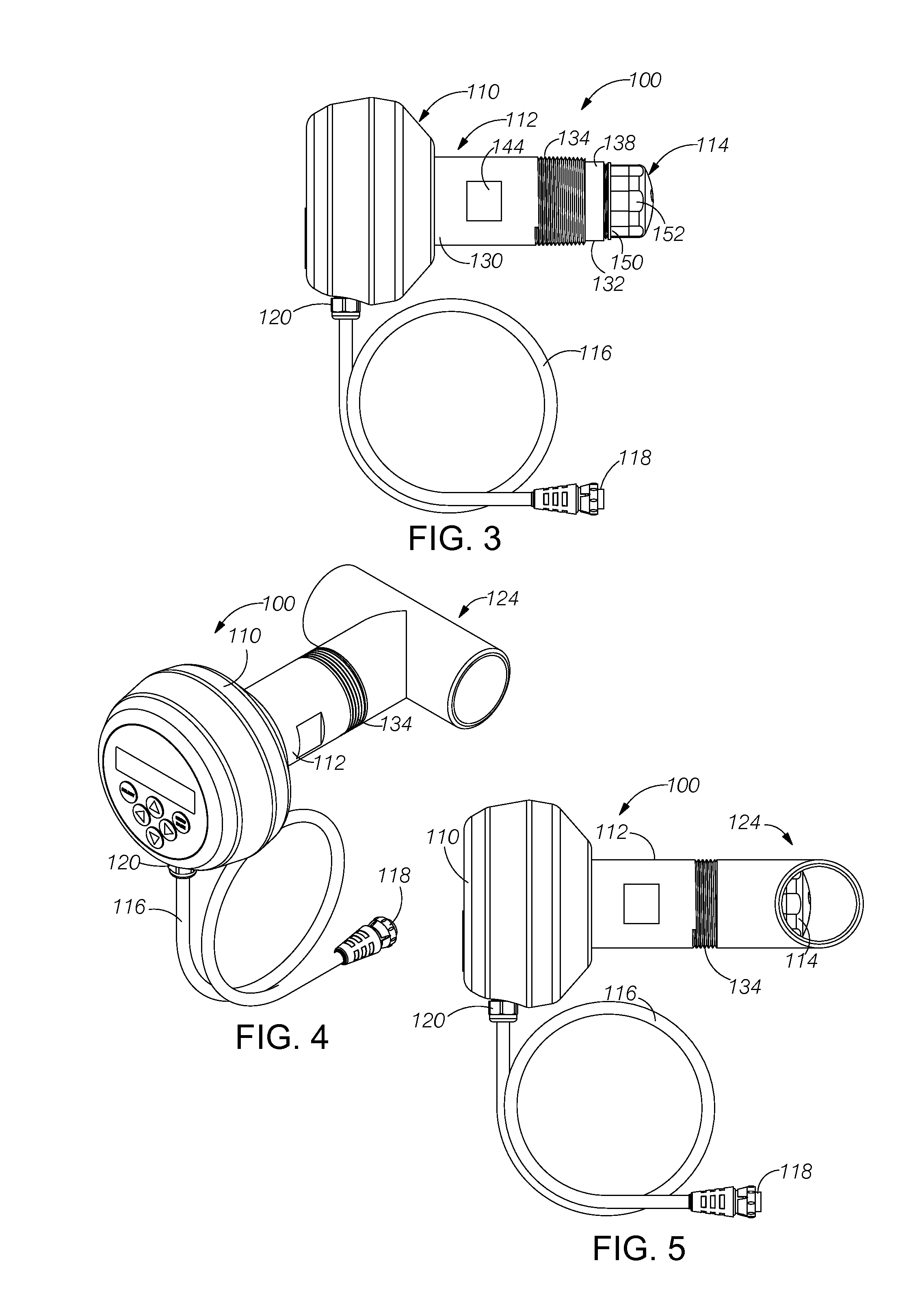Amperometric sensor system
a sensor system and amperometric technology, applied in the field of amperometric sensor systems, can solve the problems of low maintenance requirements, unreliable electrode measurements, and lack of flow independent measurement methods, so as to reduce the cost of operation, reduce maintenance requirements, and stabilize quickly
- Summary
- Abstract
- Description
- Claims
- Application Information
AI Technical Summary
Benefits of technology
Problems solved by technology
Method used
Image
Examples
Embodiment Construction
[0114]The amperometric sensor is disclosed herein with respect to exemplary embodiments. The embodiments are disclosed for illustration of the sensor system and are not limiting except as defined in the appended claims.
[0115]FIG. 1 illustrates a perspective view of an embodiment of a sensor system 100 in accordance with aspects of the present invention. The sensor system comprises an electronics enclosure 110, an intermediate housing 112, a sensor housing 114 and a communications cable 116. The communications cable is terminated at a free end with a connector 118. The opposite end of the communications cable enters the electronics enclosure via a liquid-tight cordgrip 120. Wires within the communications cable are terminated on a printed circuit board (not shown in FIG. 1) within the electronics enclosure as described below.
[0116]FIG. 2 illustrates a perspective view of the sensor system 100 of FIG. 1 viewed from the sensor end. FIG. 3 illustrates a right side elevational view of th...
PUM
| Property | Measurement | Unit |
|---|---|---|
| voltage | aaaaa | aaaaa |
| voltage | aaaaa | aaaaa |
| voltage | aaaaa | aaaaa |
Abstract
Description
Claims
Application Information
 Login to View More
Login to View More - R&D
- Intellectual Property
- Life Sciences
- Materials
- Tech Scout
- Unparalleled Data Quality
- Higher Quality Content
- 60% Fewer Hallucinations
Browse by: Latest US Patents, China's latest patents, Technical Efficacy Thesaurus, Application Domain, Technology Topic, Popular Technical Reports.
© 2025 PatSnap. All rights reserved.Legal|Privacy policy|Modern Slavery Act Transparency Statement|Sitemap|About US| Contact US: help@patsnap.com



